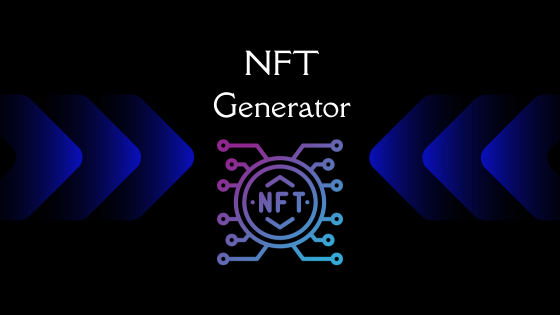With the rise of the digital art market, a new player has emerged on the scene – Non-Fungible Tokens (NFTs). The idea of creating and selling NFT art might sound complicated, but thanks to NFT generators, the process has become incredibly simplified.
What is an NFT Generator?
An NFT generator is a digital tool that enables users to convert digital assets into NFTs. This tool allows for efficient generation of unique digital tokens which can be used to represent ownership over various items, most commonly digital art. Though the subject of these tokens vary, from digital art to music, the core principle remains the same: NFTs allow digital goods to be tokenized, creating verifiable digital scarcity.
Step by Step Guide to Creating Your NFTs
Step 1: Decide on the Artwork
The first step in creating an NFT is to decide on the artwork or digital asset you want to tokenize. This could be a digital painting, a piece of music, a digital sculpture, or any other form of digital content.
Step 2: Use an NFT Generator
Once you have your digital asset ready, it’s time to use an NFT generator. The NFT generator will take your digital asset and convert it into a tokenized format that can be stored on a blockchain.
Step 3: Define Properties of Your NFT
During the generation process, you can define various properties of your NFT, such as its name, description, and metadata attributes. These attributes can describe certain characteristics of the NFT, such as its color, size, or artist.
Step 4: Mint the NFT
The final step in creating an NFT is to ‘mint’ it. Minting refers to the process of creating a new NFT on the blockchain. Once your NFT has been minted, it is officially an NFT and can be bought, sold, or transferred.

Understanding NFT Marketplaces
Understanding the different NFT marketplaces is vital while generating NFTs. Various platforms exist where NFTs can be bought and sold. Each has its own particular benefits and procedures.
Legal and Ethical Aspects
Before creating and selling NFTs, take time to understand the legal and ethical aspects. Aspects to consider include copyright laws, terms of use of the NFT marketplaces, and ethical questions around the environmental impact of NFTs.
Costs with NFTs
Bear in mind that creation and transfer of NFTs often involve certain costs or ‘gas fees’, required to process the transactions on the blockchain. Ensure that you understand these fees and consider them while deciding the price of your NFTs.
In Conclusion
In summary, NFT generators have simplified the journey of creating and selling NFTs, making it possible for anyone with a digital creation to enter the world of NFTs. Despite this, it’s crucial to understand the process, the different marketplaces, and the sculpting landscape of NFTs before jumping in, ensuring a smoother and more successful experience.